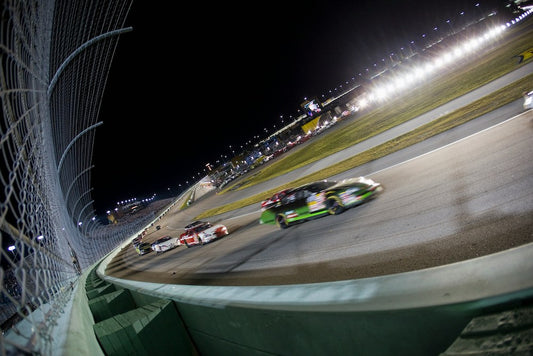World Endurance Championship: Testing Car Durability and Driver Skill

Endurance Championship is a global motorsport series that features long-distance races. The championship consists of a series of races held around the world, with teams competing in different categories based on the type of car they are driving. The WEC is known for its challenging races and iconic events such as the 24 Hours of Le Mans.
Importance of endurance
Endurance is a crucial aspect of motorsport, as it tests the durability and performance of both cars and drivers. Unlike shorter races, endurance races require vehicles to run for extended periods, often 6 or 24 hours, which puts immense strain on the engines, tires, and other components. Additionally, drivers have to maintain focus and physical fitness for long periods, which adds to the challenge.
The 24 Hours of Le Mans
The 24 Hours of Le Mans is the most prestigious event in the WEC. Held annually at the Circuit de la Sarthe in France, this race pushes teams and drivers to their limits. The race lasts for a full day, with teams strategizing their pit stops, driver changes, and fuel consumption to maximize their chances of victory. The history and tradition surrounding the 24 Hours of Le Mans make it a must-watch event for motorsport enthusiasts.
The World Endurance Championship traces its roots back to the early days of motorsport. The championship was officially established in 2012 as a successor to the Intercontinental Le Mans Cup. Since then, the WEC has grown in popularity and stature, attracting top manufacturers, teams, and drivers from around the world. The championship continues to evolve, with new races and regulations being introduced to keep the competition exciting.
Popular Races in the WEC
24 Hours of Le Mans
The 24 Hours of Le Mans is undoubtedly the most popular race in the WEC. The Circuit de la Sarthe provides a unique challenge to teams and drivers, with a mix of high-speed straights and technical sections. Top manufacturers such as Toyota, Porsche, and Audi have battled for supremacy at Le Mans, with legendary drivers like Tom Kristensen and Jacky Ickx leaving their mark on the race's history.
6 Hours of Spa-Francorchamps
The 6 Hours of Spa-Francorchamps is another iconic race in the WEC calendar. Held at the legendary Spa-Francorchamps circuit in Belgium, this race is known for its unpredictable weather conditions and challenging track layout. The race attracts a diverse range of teams and categories, with both prototypes and GT cars competing for victory.
In addition to the 24 Hours of Le Mans and the 6 Hours of Spa-Francorchamps, the WEC calendar features several other races held at various circuits around the world. These races provide different challenges and environments for teams and drivers, ensuring a diverse and exciting championship.
Additional details
High-speed battles on legendary tracks
One of the most exciting aspects of the WEC is the high-speed battles that take place on legendary tracks. Whether it's the long straights of Le Mans or the sweeping corners of Spa-Francorchamps, the WEC showcases the capabilities of both cars and drivers in demanding conditions. The combination of speed and endurance makes for thrilling races that keep fans on the edge of their seats.
Technological advancements in cars
The WEC has always been a breeding ground for technological advancements in motorsport. Manufacturers use the championship as a platform to develop and test new technologies that eventually make their way into production vehicles. Hybrid powertrains, advanced aerodynamics, and energy recovery systems are just a few examples of the innovations seen in the WEC.
Strategies employed by teams
Endurance racing is not just about driving fast; it also requires careful planning and strategy. Teams have to manage fuel consumption, tire wear, and driver stints to optimize their chances of victory. Pit stops become a critical aspect of the race, with teams aiming to minimize time spent in the pits while maximizing their performance on the track.
Classification system for determining winners
The WEC uses a classification system to determine the winners of each race and the championship. The classification is based on the number of laps completed by each car within a given time period. This system ensures fairness and transparency in determining the winners, as it takes into account the challenges faced by each team during the race.
The WEC features multiple categories of cars, each with its own set of regulations. This allows for a diverse range of cars and manufacturers to compete in the championship. The categories include LMP1, LMP2, GTE Pro, and GTE Am, each catering to different types of cars and teams. This variety adds to the excitement and competitiveness of the WEC.
Challenges
- Long-distance races: The endurance aspect of long-distance races is one of the biggest challenges faced by teams in the WEC. The ability to keep the car running at peak performance for hours on end requires meticulous preparation and attention to detail. Teams have to ensure that the car's engine, brakes, and other components can withstand the demands of the race.
- Durability of cars: Cars in the WEC go through extreme conditions during races, which puts immense strain on their durability. The combination of high speeds, long distances, and varying weather conditions can take a toll on the vehicles. Manufacturers have to design and build cars that can withstand these challenges while still delivering high performance.
- Skill of drivers: Endurance racing requires a different set of skills compared to other forms of motorsport. Drivers have to maintain focus and concentration for extended periods, often in challenging conditions. They also need to manage their physical and mental energy to avoid fatigue and make split-second decisions on the track. The skill and experience of drivers play a crucial role in the success of a team in the WEC.
- Strategic capabilities of teams: Strategy is a key component of endurance racing. Teams have to make decisions on when to pit, how to manage fuel and tire consumption, and when to change drivers. These decisions can have a significant impact on the outcome of a race. The ability to think strategically and adapt to changing conditions is essential for teams in the WEC.
Other Things to Note
Variety of racing disciplines in the WEC
The WEC is unique in that it brings together different racing disciplines under one championship. From prototypes to GT cars, the WEC caters to a wide range of motorsport fans. This diversity adds to the appeal of the championship and ensures that there is something for everyone.
Global appeal and fanbase
The WEC has a global appeal and a dedicated fanbase that spans across continents. Motorsport enthusiasts from all over the world tune in to watch the races and support their favorite teams and drivers. The championship's ability to attract fans from different cultures and backgrounds is a testament to its universal appeal.
Future developments and growth of the WEC
The WEC continues to evolve and grow, with new developments and regulations being introduced to enhance the championship. The introduction of hypercars as the top category, along with a focus on sustainability, is set to shape the future of the WEC. As the championship continues to innovate and adapt to changing times, motorsport fans can look forward to more thrilling races and exciting developments.
Conclusion
The World Endurance Championship is a premier motorsport series that tests the endurance of both cars and drivers. Through races like the 24 Hours of Le Mans and the 6 Hours of Spa-Francorchamps, the WEC showcases high-speed battles on legendary tracks while also pushing the boundaries of technological advancements in motorsport. Teams face challenges in terms of endurance, car durability, driver skill, and strategic capabilities.





